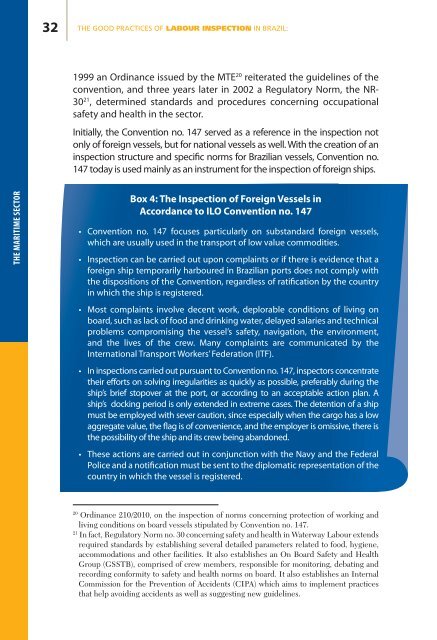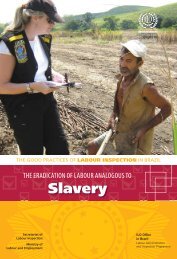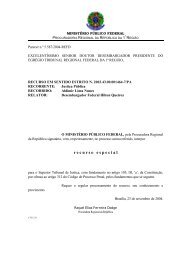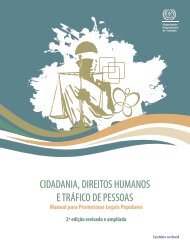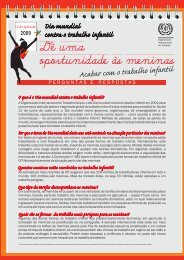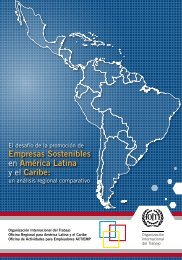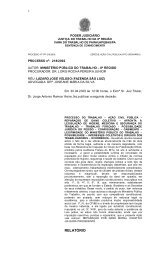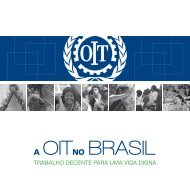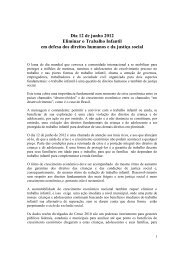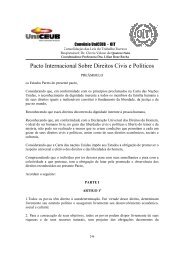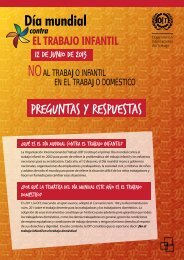The Maritime Sector
The Maritime Sector
The Maritime Sector
Create successful ePaper yourself
Turn your PDF publications into a flip-book with our unique Google optimized e-Paper software.
32THE GOOD PRACTICES OF LABOUR INSPECTION IN BRAZIL:1999 an Ordinance issued by the MTE 20 reiterated the guidelines of theconvention, and three years later in 2002 a Regulatory Norm, the NR-30 21 , determined standards and procedures concerning occupationalsafety and health in the sector.Initially, the Convention no. 147 served as a reference in the inspection notonly of foreign vessels, but for national vessels as well. With the creation of aninspection structure and specific norms for Brazilian vessels, Convention no.147 today is used mainly as an instrument for the inspection of foreign ships.THE MARITIME SECTORBox 4: <strong>The</strong> Inspection of Foreign Vessels inAccordance to ILO Convention no. 147• Convention no. 147 focuses particularly on substandard foreign vessels,which are usually used in the transport of low value commodities.• Inspection can be carried out upon complaints or if there is evidence that aforeign ship temporarily harboured in Brazilian ports does not comply withthe dispositions of the Convention, regardless of ratification by the countryin which the ship is registered.• Most complaints involve decent work, deplorable conditions of living onboard, such as lack of food and drinking water, delayed salaries and technicalproblems compromising the vessel’s safety, navigation, the environment,and the lives of the crew. Many complaints are communicated by theInternational Transport Workers’ Federation (ITF).• In inspections carried out pursuant to Convention no. 147, inspectors concentratetheir efforts on solving irregularities as quickly as possible, preferably during theship’s brief stopover at the port, or according to an acceptable action plan. Aship’s docking period is only extended in extreme cases. <strong>The</strong> detention of a shipmust be employed with sever caution, since especially when the cargo has a lowaggregate value, the flag is of convenience, and the employer is omissive, there isthe possibility of the ship and its crew being abandoned.• <strong>The</strong>se actions are carried out in conjunction with the Navy and the FederalPolice and a notification must be sent to the diplomatic representation of thecountry in which the vessel is registered.20Ordinance 210/2010, on the inspection of norms concerning protection of working andliving conditions on board vessels stipulated by Convention no. 147.21In fact, Regulatory Norm no. 30 concerning safety and health in Waterway Labour extendsrequired standards by establishing several detailed parameters related to food, hygiene,accommodations and other facilities. It also establishes an On Board Safety and HealthGroup (GSSTB), comprised of crew members, responsible for monitoring, debating andrecording conformity to safety and health norms on board. It also establishes an InternalCommission for the Prevention of Accidents (CIPA) which aims to implement practicesthat help avoiding accidents as well as suggesting new guidelines.


